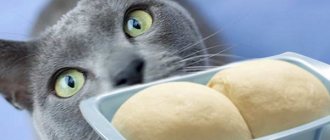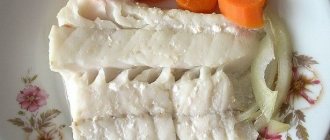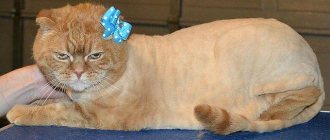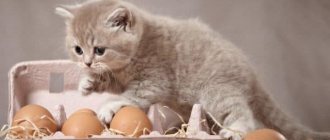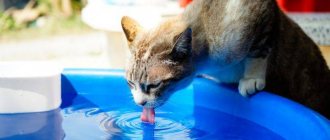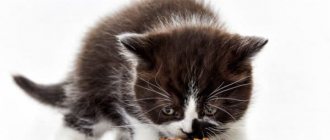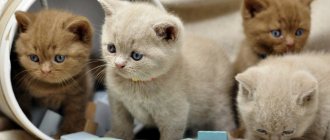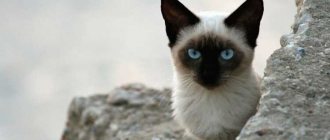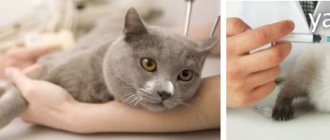The basis of a pet's diet is meat, a source of protein. The second most important component of the diet is cereal, a source of carbohydrates and fiber. Next come fats, vitamins, minerals and other beneficial substances. Today, the “Food in Detail” section will talk about the role that rice plays in the diet of animals. What cereals can be given to dogs and cats? Is it possible to give rice to animals? Which prepared foods contain rice?
Everything you need to know about rice
Rice is a cereal crop from which cereals and starch are produced. It is a source of complex carbohydrates, vitamins B and E, carotene, 8 amino acids, as well as iron, potassium, zinc, phosphorus, calcium and iodine.
Rice cereal is known for its dietary and hypoallergenic properties. Thanks to complex carbohydrates, the nutritional properties of rice are quite high, but it cannot be called high in calories. But unlike other grains, it contains very little gluten. Accordingly, allergies to vegetable protein do not occur.
Useful properties of rice
Rice is good for cats because:
- Normalizes the functioning of the digestive system. If your pet has diarrhea or stool disorders, eating small portions of porridge helps get rid of unpleasant symptoms, prevents dehydration and the development of diarrhea (in a healthy animal).
- Provides carbohydrates. The cat remains active and energetic.
- It is a source of vitamins and minerals. Prevents deficiency of zinc, silicon, phosphorus, magnesium.
- Easier than other cereals to be absorbed by the body. Can be used as a natural medicine for a number of pathologies of the gastrointestinal tract.
- It does not contain gluten, so it is suitable for feeding animals intolerant to this substance.
Benefits of cereals
Various cereals must be included in a cat’s diet. As for rice, it contains a large amount of useful vitamins and minerals; it is a source of magnesium and phosphorus, silicon and zinc, as well as many useful vitamins. But despite all its benefits, it is impossible to give a cat rice in large quantities, since it has a fastening property that can cause constipation in a cat.
Rice porridge will serve as an excellent source of carbohydrates for the cat's body. She needs them in small quantities, much less than protein. Thanks to a sufficient supply of carbohydrates, the cat always remains active and cheerful, she plays, runs and has fun.
In addition to rice, a cat's diet should include the following cereals::
Rules for consumption and inclusion in the diet
Before introducing this product into your cat's menu, consult your veterinarian.
If your animal begins to become constipated or feels worse when eating porridge, remove it from the diet and consult a doctor.
Give your pet only refined white rice. Brown or red are less digestible. The rest of the feed should consist only of protein products (meat, poultry or fish).
Only white rice should be used to feed cats.
Daily norm
Porridge should be given no more than once a week. The grain product should account for no more than 25% of all calories consumed by the cat. If you prefer to give your pet rice water, do not pour more than 1/3 cup at a time.
Restrictions
You will have to give up rice if your cat is often constipated. The grain will worsen the pet's condition. Rice porridge should not be given to babies whose digestive system has not yet developed. Kittens may not digest the product, which will lead to poor health, nutritional deficiency, and underdevelopment.
Rice in prepared animal feed
Rice is used in the diet of animals not only with the natural method of feeding. Due to its unique properties, rice is often used in the production of finished animal feed. However, there is one “but”. If ordinary white rice is used in production, and besides, it is one of the first components of the feed, then it is rather a filler. If brown rice is used in the diet of animals, then this is one of the expensive components, unlike corn and other cereals. It is often included in expensive super-premium foods.
Rice comes in different shapes and colors and is divided into several varieties. The beneficial properties of rice also differ. Thus, white refined rice has a high glycemic index, which does not have the best effect on the health of dogs. It also contains fewer nutrients compared to brown or brown rice. Rice in dog and cat food is added whole, crushed or in the form of flour.
Review of rice food for dogs and cats
The ingredient rice in prepared animal feed has different names. This often confuses owners who select a diet for their pet. On the one hand, rice seems to be a good component of the feed, on the other hand, which of the types of rice indicated in the feed is still better, and which is worse?
Ingredient rice in animal diet
In addition to the name rice, there can be others - natural rice, whole or whole white rice, etc. As a rule, if rice is the first in the list of food components, then it plays the role of a filler. If rice in an animal's diet is simply called "rice", it is most likely white rice. However, the type of processing is not clear. This name may hide waste from rice processing industries. Usually the quality of such an ingredient is questionable.
Cat food with ricewith rice ingredient | Dog food with ricewith rice ingredient |
|
|
PS The ingredient is not contained in all foods and lines presented by these brands.
Ingredient brown rice in animal diet
In feed formulations, brown or brown rice may be labeled with prefixes such as whole, whole grain, organic, whole, semi-refined, or milled.
Brown (unpolished) rice in the diet of animals is a healthier, higher quality and, accordingly, more expensive ingredient, in contrast to white. If the packaging states that the rice is organic, this means that the rice grains were grown without the use of chemical fertilizers or pest control treatments.
Cat food with ricewith brown rice ingredient | Dog food with ricewith brown rice ingredient |
|
|
PS The ingredient is not contained in all foods and lines presented by these brands.
Ingredient parboiled rice in animal diet
Parboiled rice is made by soaking it with the husk in water and then exposing it to steam. As a result, most of the beneficial substances are stored inside the grain. In terms of its properties, parboiled rice in animal feed is equivalent to brown rice.
The ingredient steamed rice is found in TM Natyka food.
Broken rice ingredient in animal diet
In fact, this is the same white rice, however, not in its entirety, but broken rice grains after threshing the harvest. It is believed that broken rice contains significantly less nutrients, and its glycemic index is higher than that of other types of rice. All this ingredient provides to the feed is carbohydrates.
Cat food with ricewith the ingredient “broken rice” | Dog food with ricewith the ingredient “broken rice” |
|
|
PS The ingredient is not contained in all foods and lines presented by these brands.
Brewer's rice ingredient in animal diets
Beer or brewer's rice is fragments of rice grains or broken rice. In fact, beer rice is a carbohydrate filler. There are two assumptions regarding the source of its origin. According to one version, brewer's rice is fragments of rice grains after threshing, which brewers use in their production. According to the second, beer rice is a waste product from brewing production. The second version of the use of rice in the production of ready-made animal feed is unlikely.
The ingredient brewer's rice is found in some Meow Mix, Pronature and Hill's cat and dog foods.
Ingredient rice bran in animal diet
Rice bran is the residue (husk, husk, shatter, etc.) after polishing rice grains. It is believed that bran is healthier than white rice in animal feed, due to its higher content of nutrients. In addition, rice bran has a beneficial effect on intestinal function.
Cat food with ricewith the ingredient “rice bran” | Dog food with ricewith the ingredient “rice bran” |
|
|
PS The ingredient is not contained in all foods and lines presented by these brands.
Ingredient rice flour in animal diet
Rice flour or powder is much better than wheat flour, which is added to ready-made diets. Rice flour is added to the feed of animals with sensitive digestion or a tendency to food allergies. The main thing is that it should not be one of the first ingredients in the food, playing the role of a cheap filler.
The ingredient rice flour is found in some Nutra Gold, Happy Cat and Happy Dog cat and dog foods.
Ingredient rice protein in animal diet
Rice protein is a dried concentrate from which the starch has been removed. It is also called rice protein. In fact, it is a source of vegetable protein that is better absorbed than wheat or corn and practically does not cause allergic reactions.
Cat food with ricewith rice protein ingredient | Dog food with ricewith rice protein ingredient |
|
|
Now you know what role rice plays in the diet of animals. The most important thing is to remember the balance of all components. Just because an ingredient is healthy doesn't mean there needs to be a lot of it. Excessive amounts of useful components can lead to malfunction of the animal’s body or disease. Study the composition of ready-made diets, analyze the food in detail and feed your pets correctly!
Cooking methods
You can give your cat rice water.
To prepare the drink, take 2 tbsp. l. cereals and boil for half an hour in 100 ml of clean water. Then strain the resulting product, carefully squeezing out the raw materials.
It is also allowed to give cereal in the form of porridge.
Cook the cereal until softened.
It is prohibited to add salt or spices during the cooking process. You cannot season the finished dish with sauces. They contain large amounts of fat, salt, and synthetic additives. In addition, such dressings may contain pepper, onion or garlic, which are harmful to cats’ digestion. The porridge is boiled in water, after which boiled meat (veal, rabbit, turkey) or offal (stomachs, beef or chicken hearts) is added to it.
It is recommended to add boiled meat, offal and vegetables to rice porridge.
You can add a small amount of boiled or steamed vegetables (carrots, zucchini, pumpkin or broccoli).
Correct selection of diet
- Surely every cat owner knows that his pet, due to its natural characteristics, is classified as a predatory mammal. This is true even when it comes to domesticated pets. The basis of the basic diet is fish and meat, about 60% and even more are allocated to them. Preference is given to beef, turkey, chicken and other low-fat varieties.
- It is forbidden to treat your pet to a raw meat product. It must be scalded, or even better, boiled. It would also be a good idea to grind it into minced meat or finely chop it. If the animal does not like boiled food, then the meat is first thoroughly frozen, then defrosted and scalded with boiling water. This partially eliminates the possibility of helminth infection.
Precautions and possible harm
Cats are predators. For normal functioning, they require a large amount of protein, and need very little carbohydrates. Rice puts a strain on the pancreas and liver, and if consumed in excess, causes disruption in the functioning of these organs.
An excess of grains in the body leads to a lack of nutrients and deterioration of the pet’s health. The cat will grow old faster and die.
If there is too much rice in a kitten's diet, it will grow up underdeveloped, weak, and sickly.
In addition, animals that regularly consume porridge suffer from a lack of essential amino acids. Some veterinarians consider rice to be an empty product, useless for cats.
Cats eat grains to fill their empty stomachs. Due to a lack of nutrients, the animal may eat too much, trying to replenish the reserves of necessary micro- and macroelements. Because of this, weight gain and obesity are observed.
Is it possible to give rice to kittens?
Today, leading manufacturers of products for four-legged pets supply various food for cats to the shelves of pet stores. However, for unknown reasons, some owners continue to feed the animal what is called homemade food. It is important to understand that all responsibility for the cat’s health falls solely on your shoulders. If you create an incorrect diet, your pet will develop serious problems with the liver and gastrointestinal tract. In today's material we will study the possibility or impossibility of treating a cat with rice.
It's better not to feed
All so-called “instant” cereals are forbidden for cats, since they contain a lot of sugar - the most harmful product for a cat’s stomach, as well as cereals that are simply not absorbed by the animal’s body.
Semolina
Many owners are sure that semolina with milk is necessary for the growing body, so they often treat their pets to such porridge. They continue to feed an adult cat this product, adding meat or fish to it, which causes irreparable harm to the animal’s body. Numerous studies have proven that semolina is pure starch, which does not provide any benefit. In addition, it contains a lot of gluten, which makes the product too heavy and takes a long time to digest.
Millet
Another harmful and heavy grain is millet. Even when cooked in water, it is quite high in calories and is practically not absorbed by the cat’s body.
Corn porridge
Corn grits contain many microelements and vitamins, but they are absolutely not suitable for regular feeding of cats. Veterinarians claim that 90% of digestive problems are caused by this porridge, since it is not only poorly digested, but also causes flatulence and constipation.
What cereals are good for cats?
So, we found out which cereals should not be given to a cat. But these cereals are highly desirable in the diet of animals:
- Buckwheat
– buckwheat porridge can bring a lot of good things: strong immunity, healthy skin and coat, normalization of the digestion and circulatory system, stomach and pancreas.
It contains a lot of vitamins B, E, PP, iron, calcium, phosphorus, copper, iodine, cobalt. In addition, buckwheat is very nutritious due to its high protein content; Rice
- rice porridge for cats is considered a source of vitamins B, PP and E, it contains selenium, potassium, iodine, iron, calcium, zinc. Animals that regularly consume rice porridge have strong heart and nervous systems, stable immunity, a beautiful coat and healthy skin. In addition, rice helps normalize stool. This product is also suitable for cats prone to allergies, since rice does not contain gluten. As a rule, cats like porridge of brown rice with meat, cooked in meat broth.
Buckwheat and rice are perhaps considered the most suitable cereals for cats. What about porridges made from oats and barley? They have many benefits for cats' bodies, but it is worth considering that such cereals have contraindications.
- Hercules
- oatmeal, due to the antioxidants in its composition, is reasonable to give to cats suffering from bacterial and viral infections. Rolled oats contain vitamins B, PP, E, iron, calcium, magnesium, phosphorus. This product strengthens the animal’s bones and prevents the development of anemia. Typically, liquid oatmeal is well absorbed by the cat's body, normalizes diarrhea and relieves stomach pain. However, you shouldn’t give it to your pet too often because oats contain gluten, which can negatively affect your pet’s health; - Barley porridge
- we are talking about pearl barley and barley, which are rich in vitamins A, B, D, E, PP, selenium, potassium, calcium, iron, copper, manganese, molybdenum, strontium. They can also be given to cats, but not more than 1-2 times a week, provided that the pets do not have gluten intolerance. Barley porridge (barley and barley) in the diet alleviates the condition of cats suffering from stomach problems; they are also good for bones and eyesight, the nervous system and fur. But with caution, barley and barley should be given to animals suffering from chronic constipation.
Types of cereals
For greater clarity, we will analyze all the popular cereals. Let's start with the all-time favorite semolina . Semolina is often given to kittens and puppies; it is considered healthy and very nutritious. We won’t argue about nutritional value, but what are the benefits? The usefulness of this product is mythical and has been imposed on people since childhood. It has long been no secret that the so-called generation of diabetics grew up on semolina porridge, which was actively prepared in children's institutions... called healthy and nutritious.
Semolina, milk and sugar are a very insidious combination. This porridge is very high in calories and, despite the harmfulness, its beneficial properties are reduced to zero! Animals cannot eat sugar, so many owners cook semolina on their fish. You don’t just need to talk about the dangers of such a delicacy, you need to shout. Fish is in principle inappropriate in a cat’s diet, and even more so in combination with harmful grains.
The only advantage of semolina is that it fills you up quickly. This is another insidious property of cereals; the cat eats a dangerous treat, looks full and happy... why not feed it? Firstly, it will take less than six months for the development of hormonal imbalance with such feeding, and secondly, if you give semolina with fish to castrated or sterilized cats, be prepared for:
- Very rapid development of obesity.
- Diabetes.
- Urolithiasis.
Important! Cats should absolutely not be given alfalfa! There is no point in talking about this product separately, since it is toxic to pets.
Corn grits cannot be called harmful, but they are definitely useless. In simple words, corn grits are not digestible by cats at all, yes, a pet can fill its stomach with it and even feel full, but the body will starve. People use corn grits as a source of vitamins A, C, E. Such porridge contains almost no microelements. The advantage of cereal is its brush effect; it helps in cleansing the body and intestines.
Only as prescribed by a doctor can a cat be given corn porridge, for example, on a weight loss diet. However, keep in mind that even a strong digestive system takes a long time to digest corn porridge. For cats with a sensitive gastrointestinal tract, this product is prohibited. If you feed your cat only corn porridge, her body will adapt to digest food partially, namely starch and gluten.
Pea cereal (and peas) is adored by many for its smell, taste and feeling of quick satiety. For humans, peas, in reasonable quantities, are actually beneficial. Cereals are rich in vitamins, carotene and vegetable protein. Pea cereal is high in calories because it contains sucrose, but if you compare the benefits of sucrose and the harm of sugar, the “lesser evil” is not difficult to identify.
Let's return to cats, can they have pea cereal, porridge and peas? No and no again. The reason is the same as with corn grits, both of these products are not digestible by cats. However, if the body can get at least starch from corn, then from peas only vegetable sugar . In addition, pea porridge is known for its consequences: flatulence and the risk of constipation.
Wheat cereal is rightfully considered the most popular among animal owners. The reason is its availability, pleasant taste, and quick saturation. Wheat cereal cannot be called harmful, but it should not be in the diet of a healthy cat! The advantages of cereals are the rich content of coarse fibers that the cat really needs.
There are many more disadvantages:
- The finished porridge is very viscous, difficult to digest, and most of it is not absorbed.
- If digestion is impaired, the porridge ferments, which leads to flatulence, bloating, colic, spasms, and dysbacteriosis.
- Contains a lot of gluten.
- Contains gluten.
A worthy competitor to wheat porridge is barley groats . The advantages of the product are similar: low price, quick satiation, cost-effectiveness, cats quickly get used to eating porridge. Barley porridge also contains coarse fiber, which cats need...in fact, that's why pets eat this product.
A lot can be said about the disadvantages of barley groats, but we will highlight only the main ones. The load that a cat's intestines experience when digesting barley...can be compared to pea porridge. For complete digestion, a lot of bile is introduced into the intestines, which puts a strain on the liver and a certain risk of developing gastrointestinal diseases. If your cat has a sensitive digestive system, it will not be able to digest barley porridge. Within 6–8 hours, while the food is in the intestines, the porridge will ferment, which will lead to the formation of gas, colic, or even constipation. When regularly fed barley porridge, cats develop inflammation of the intestinal walls, which can be seen by bloody inclusions in the feces.
Pearl barley is harmless and useless. The advantage of the product is long digestion, low calorie content and the cat’s ability to assimilate the product. Barley is often recommended to be given to cats to reduce body weight. Naturally, like any cereal, pearl barley can lead to increased formation of gases, but there are no other threats. A healthy cat of normal weight should not be fed pearl barley, since the animal will receive literally nothing useful from such a treat.
When should cats not be given rice?
As always happens in life, in addition to its advantages, rice also has disadvantages. Cats are obligate carnivores; their main food product is meat. Rice does not contain enough protein, and protein is the source of energy for all cat species. In fact, rice has no significant nutritional value for a cat's body. In addition, it can cause increased gas formation.
Like other human foods, rice is not recommended for feeding cats. High-quality feed eliminates the need to use any food additives, which is unlikely to be achieved when feeding homemade products.
Eating too much rice can lead to malnutrition, even if your cat eats a lot. Of course, this can seriously affect your pet's health.
The cat's body is not adapted to digest plant foods. Treat rice like filler. Having no nutritional value, in large quantities it can cause many digestive disorders. Moreover, if your friend is not used to eating rice, he may feel sick. A diet high in rice impairs the development of newborns or small kittens.
To summarize, we can conclude that rice causes many more problems than it provides benefits, among which, perhaps, is only the fight against diarrhea.
Vegetables are safe for cats
The basic rules for safely feeding cats vegetables come down to just three points. First, vegetables should make up no more than 10% of the daily intake (about 2-3 teaspoons, depending on the weight and size of the animal). Secondly, they are given exclusively boiled or steamed, since raw ones are difficult for the animal to absorb, they are more difficult to digest and can get stuck in the throat, causing suffocation. Thirdly, vegetables are cut into small pieces that are convenient for the animal to eat, or crushed into puree and mixed with the main food (except dairy products) or given separately.
Only a small list of vegetables is considered safe for cat health. In addition to leafy vegetables (lettuce, the darker the leaf, the better), which are effective in removing hairballs from your pet’s stomach and intestines, you can feed your pet:
- Carrots that many pets love.
- Zucchini is rich in magnesium, manganese and potassium.
- Broccoli contains antioxidants.
- Asparagus, which is a source of fiber and vitamins.
- Green beans, which are an excellent source of fiber and are enjoyed by many cats.
- Cucumbers that do not need to be boiled, but are better served fresh. Some pets adore them, perhaps because they quench their thirst.
- Celery, rich in vitamins and microelements.
- Melon, given in small quantities, peeled and seeded.
It is known that cats cannot taste sweets. But some meowing pets are a fan of melon and enjoy eating watermelon, peaches, and blueberries.
It is better to avoid other vegetables and fruits and not try to include them in the diet of a meowing pet. Because to varying degrees they are either difficult to digest or toxic to cats. Under no circumstances should you give onions, garlic, grapes, raisins, or avocados - they are extremely toxic to animals. They can cause simple digestive upset or lead to severe poisoning, depending on the dosage. For example, raisins can cause sudden kidney failure, and onions and garlic lead to the development of anemia.
It should be remembered that you need to introduce vegetables into your cat’s diet gradually, separately and in small quantities.
It is important to evaluate the body’s reaction to a new product, as well as the pet’s desire to eat a specific vegetable. If the pet refuses, then there is no need to insist.
If after consumption there is an upset stomach (diarrhea, bloating), then there is no need to give it to the animal anymore.
You should take care of pets that tend to chew indoor plants. They may refuse vegetables, but they will not refuse grass grown specifically for them, for example, sprouted oats. The herb helps cleanse the stomach and intestines and is rich in vitamins and microelements.
- What seafood can a cat eat?
- How much water does a cat need to drink?
- Feeding old cats
How to introduce rice
You need to add rice to the diet in small portions so as not to cause constipation in the animal; many rice grains will be unnecessary, especially at first. Experts also recommend adding rice to other foods to avoid constipation.
Why does a cat sleep on its back?
Can cats eat sushi?
The debate about rice in the diet of cats is still going on. Some believe that it should not be present at all in a cat's diet, while others believe that it is normal.
How to determine the sex of a kitten yourself. VetAnswer.
48-1 part of the veterinarian's answers to your questions. 00:10 How to distinguish a cat from a cat, if it is a kitten. 01:27 literature...
The goal of the fasting diet is to empty the intestines
Please note that if you have diarrhea due to improper feeding, this is not necessary. But in case of nutritional allergies or poisoning, this is just relevant
We invite you to read: How to make a cat affectionate: secrets of proper upbringing
Fasting diet rules:
It is kept strictly for 10-12 hours, that is, you need to start it in the morning, and finish it in the evening and feed the kitten. A hunger strike cannot be maintained longer, since a young body needs frequent feeding and reacts sharply to a lack of food.
If you are on a hunger strike, you can relieve your kitten's situation by feeding him rice water. The rice is boiled, after which the rice itself is not given to the pet, but is fed with liquid. Rice water has an astringent and strengthening effect, and also contains some nutrients.
Water should be available to the kitten. Of course, it must be clean.
Try not to eat in front of the kitten so as not to irritate it.
If you have allergies, you need to switch to natural nutrition.
What may be on the menu:
- Boiled lean meat (beef, chicken, goat);
- Boiled fish;
- Hard-boiled eggs;
- Baby food (make sure the ingredients are natural);
- Porridge on the water.
Important! Feed the kitten a little (a spoonful of food), but often (5-7 times a day). What not to feed:
What not to feed:
- Fatty foods;
- Pork, other fatty meats and fish;
- Spicy or salty foods;
- Fried foods;
- Milk from the store, but milk from a mother cat will be beneficial, on the contrary. Of course, this rule does not work for a one-month-old kitten that feeds only on milk.
The diet differs depending on the age of the animal:
A one-month-old kitten is fed exclusively with milk until it is 2-3 weeks old. At the same time, it is advisable to buy natural products for newborns at baby food points, rather than using milk from the store.
Kittens at 2 months need both milk and complementary foods. The most suitable complementary foods are porridge with water, cottage cheese, and boiled eggs. Meat can be given in small quantities, but it is better to avoid fish.
A pet at 3 months is fed adult food. Increase the amount of meat and meat products; the ratio of meat to porridge should be 1:1. Boiled vegetables are also added to the diet.
A kitten at 4 months can already be fed fish; many people add meat and bone meal to the menu. During this period, the basis of the diet is porridge and meat.
The dangers of raw rice
Why should only boiled rice go into a cat’s bowl? In fact, this requirement is connected not only with the taste of boiled grain. Eating raw rice may cause certain problems:
If such symptoms persist for 24 hours, then the pet needs emergency veterinary care.
It’s not for nothing that rice is so popular all over the world. Its benefits have been proven, and many industrial feed manufacturers include the product in their diets. The same can be done by the owner who feeds the pet with natural products. The main thing is to observe moderation and not forget about the peculiarities of preparing cereals.
How to choose the right menu
Since cats are predatory animals, they need to be fed accordingly. More than half of their diet should be meat. It could be turkey, chicken, beef. It is better to boil and twist the meat. Raw meat should not be fed to avoid the possibility of helminth infection. If you think that your cat is still a predator and should receive raw meat in its diet, then it can and should be frozen before consumption. Then defrost and, already defrosted, add it to your pussy’s menu.
